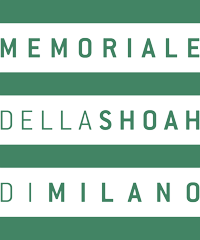The Milan Central Station was equipped with technological innovations, such as a moving table and the railcar lift. Once loaded, the railcars were placed on the moving table one at a time and brought towards the lift, then raised to the top floor of the station, to a maneuvering area between tracks 18 and 19, where the train would be formed and the driver’s railcar attached. The deportations, started in December 1943 and ended in January 1945, which is a span of 2 years. They took place at night, while regular commercial activity of loading and unloading goods kept working during the day. Hence the deportations required the help and collaboration of the station employees.
On the dock there are 20 plaques, each commemorating a convoy that departed from Milan Central Station. Of these 20 trains, 12 deported only Jews, 5 only political prisoners, 3 carried mixed deportees. The plaques are arranged on three levels to accentuate the differentiation, and each shows the departure date of a convoy and its destination. Victims deported from Italy were Jewish prisoners, political prisoners and IMIs (Italian soldiers and officers who refused to fight for the Nazis and the RSI). Most of the plates show an Italian destination as their arrival station, reminding us of the existence of sorting camps and concentration camps even in Italian territory. The Italian destinations of the convoys departing from the Central Station were Verona, Bolzano and Fossoli (famous survivor Primo Levi departed from the latter). Verona and Bolzano had small transit camps and, at the same time, offered fast connection with Europe through the Brenner Pass, while the Fossoli camp is where the deportees would stop for a few days before leaving for the final destination camps.





